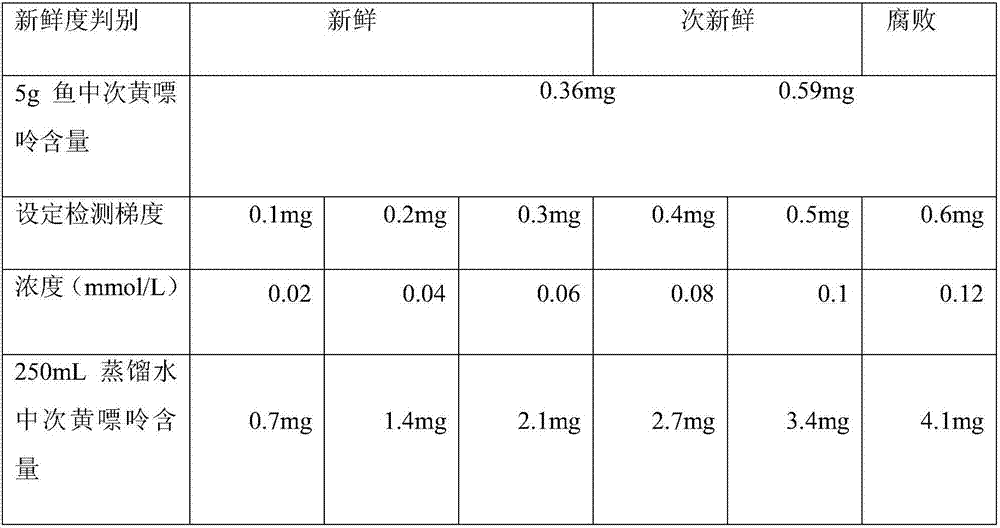Method for detecting content of hypoxanthine in fish
A technology of hypoxanthine and detection method, applied in the detection field of hypoxanthine, can solve the problems of difficult implementation, expensive experimental instruments and equipment, immeasurable time and personnel effort, etc., and achieves easy operation, fast completion speed, Accurate effect
- Summary
- Abstract
- Description
- Claims
- Application Information
AI Technical Summary
Problems solved by technology
Method used
Image
Examples
Embodiment 1
[0021] Embodiment 1: the method for detecting hypoxanthine content in the fish in the present embodiment is carried out according to the following steps:
[0022] Step 1. Put the solid into a small centrifuge tube, add distilled water, put it into a circular tank, and put the same type of fish in its symmetrical position. Treatment: wash the fish, cut off the gills and tail, and cut into small pieces. Take 5g of fish meat, grind it to a muddy state with a mortar, put the centrifuge tube, and add the same amount of distilled water to ensure the weight balance of the symmetrical position, turn on the switch of the low-speed centrifuge, set it to 5000r / min, centrifuge for 10min, and then Use a plastic straw to extract the supernatant into the syringe, cover the filter membrane and squeeze and filter 10 mL into the beaker. If the liquid rate drops during the pressing process, replace the new filter membrane in time. In the filtered liquid, add 0.1 mL of 10% trichloroacetic acid wi...
PUM
| Property | Measurement | Unit |
|---|---|---|
| wavelength | aaaaa | aaaaa |
Abstract
Description
Claims
Application Information
 Login to View More
Login to View More - R&D
- Intellectual Property
- Life Sciences
- Materials
- Tech Scout
- Unparalleled Data Quality
- Higher Quality Content
- 60% Fewer Hallucinations
Browse by: Latest US Patents, China's latest patents, Technical Efficacy Thesaurus, Application Domain, Technology Topic, Popular Technical Reports.
© 2025 PatSnap. All rights reserved.Legal|Privacy policy|Modern Slavery Act Transparency Statement|Sitemap|About US| Contact US: help@patsnap.com



